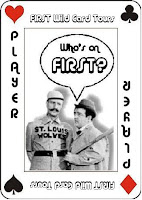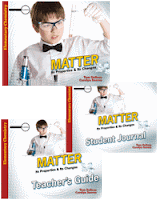 It is time for a FIRST Wild Card Tour book review! If you wish to join the FIRST blog alliance, just click the button. We are a group of reviewers who tour Christian books. A Wild Card post includes a brief bio of the author and a full chapter from each book toured. The reason it is called a FIRST Wild Card Tour is that you never know if the book will be fiction, non~fiction, for young, or for old…or for somewhere in between! Enjoy your free peek into the book!
It is time for a FIRST Wild Card Tour book review! If you wish to join the FIRST blog alliance, just click the button. We are a group of reviewers who tour Christian books. A Wild Card post includes a brief bio of the author and a full chapter from each book toured. The reason it is called a FIRST Wild Card Tour is that you never know if the book will be fiction, non~fiction, for young, or for old…or for somewhere in between! Enjoy your free peek into the book!
You never know when I might play a wild card on you!
Matter: Its Properties & Its Changes
***Special thanks to Robert Parrish of New Leaf Publishing Group for sending me a review copy.***
 Tom DeRosa left seminary and the church thinking he was throwing away his faith, but in reality he found a new religion: evolution. In 1978, Tom accepted Jesus Christ as Lord of his life. Soon after he studied biblical creation at Coral Ridge Presbyterian Church and came to the conclusion that a lack of knowledge of the biblical account of creation is greatly responsible for keeping many people from Christ. His commitment to breaking down those barriers is what led Tom to form Creation Studies Institute in 1988.
Tom DeRosa left seminary and the church thinking he was throwing away his faith, but in reality he found a new religion: evolution. In 1978, Tom accepted Jesus Christ as Lord of his life. Soon after he studied biblical creation at Coral Ridge Presbyterian Church and came to the conclusion that a lack of knowledge of the biblical account of creation is greatly responsible for keeping many people from Christ. His commitment to breaking down those barriers is what led Tom to form Creation Studies Institute in 1988.
 Carolyn Reeves, Ph.D. and her husband make their home in Oxford, Mississippi where they are active members of North Oxford Baptist Church. Carolyn retired after a 30-year career as a science teacher, finished a doctoral degree in science education, and began a new venture as a writer and an educational consultant.
Carolyn Reeves, Ph.D. and her husband make their home in Oxford, Mississippi where they are active members of North Oxford Baptist Church. Carolyn retired after a 30-year career as a science teacher, finished a doctoral degree in science education, and began a new venture as a writer and an educational consultant.
AND NOW…THE FIRST CHAPTER:
The Main Book Product Details:
List Price: $12.99
Reading level: Ages 9-12
Perfect Paperback: 96 pages
Publisher: New Leaf Publishing Group/Master Books (May 8, 2009)
Language: English
ISBN-10: 0890515603
ISBN-13: 978-0890515600
The Student Journal Product Details:
List Price: $4.99
Reading level: Ages 9-12
Paperback: 32 pages
Publisher: New Leaf Publishing Group/Master Books (May 8, 2009)
Language: English
ISBN-10: 089051559X
ISBN-13: 978-0890515594
Product Dimensions: 10.6 x
The Teacher’s Guide Product Details:
List Price: $4.99
Paperback: 32 pages
Publisher: New Leaf Publishing Group/Master Books; Tch edition (May 8, 2009)
Language: English
ISBN-10: 0890515611
ISBN-13: 978-0890515617
Its Properties & Its Changes
By Tom DeRosa & Carolyn Reeves
Investigation #1: The Physical Side of Chemicals
Think about this. A detective collected samples of food from the table where a victim was eating when he collapsed. The detective sent them to a crime lab. A few days later, the lab called to say they had positively identified a poison in the victim’s food that was not in anyone else’s food. Have you ever wondered how someone in the crime lab could figure out what chemicals are present in food or in someone’s blood or in something else?
The Investigative Problems:
How can the physical properties of a chemical substance be used to help identify the substance?
Gather These Things:
Magnet
Iron nail
Sugar cube
Copper penny
Container of water
A piece of paraffin
Small amount of vegetable oil
Procedure & Observations
Your teacher will show you ten items. Your job is to identify one of the items on the basis of its physical properties. You should eliminate any item that doesn’t match the descriptions. These are the physical properties of the item: It is round. It is flat. You would not want to eat it. It would be hard to break. It is shiny. What is the item that has all of these properties?
Your teacher will give you some more substances to investigate, but each of these will be a pure chemical substance. They will be either an element or a compound.
Bring a magnet near each substance and observe if the magnet has an effect on it. Place each substance in a container of water and observe if it floats or sinks. Note if it is soluble (will dissolve) or insoluble (will not dissolve) in the water. Note also the color and whether it is shiny or dull. Put this information in a data table.
(sample of date table)
The Science Stuff
Physical properties are often characteristics you can see, hear, taste, smell, or feel, but may include any physical characteristics of a substance. You used some simple physical characteristics to identify one of the ten items you were first shown.
Some of the items you were shown were pure substances (like the glass), and some were a mixture of many substances (like the apple). A pure chemical substance could be either an element or a compound. (We’ll learn more about elements and compounds later.) A fragment of a pure substance would have the same properties as the whole substance. All of the basic particles in a pure substance are the same. For example, a piece of pure iron only contains particles of iron and a container of pure water only contains particles of water.
Properties such as size and shape were helpful in identifying the first items, but they are seldom considered in identifying pure chemical substances. The properties of the five pure substances listed in the chart will be present regardless of the size, shape, or amount of the substance. Scientists look for characteristics that will remain the same no matter where the chemical is found. Almost any substance can be made into a round shape, so this would not be helpful in knowing what chemical is present.
We examined physical properties of several pure substances, including the effects of a magnet, whether the substance would float or sink in water, whether the substance was soluble or insoluble in water, its color, and its shininess. There are many other properties we could have considered, such as odor, taste, density, hardness, brittleness, elasticity, melting and boiling temperatures, solubility in other liquids, conductivity of heat and electricity, and viscosity.
Making Connections
There is a huge need for methods, instruments, and trained people to identify chemical substances that are present in things. Identifying unknown chemicals is part of the study of analytical chemistry. This includes what chemical are present, their characteristics, and how much is present. There are many crime labs that hire people to help solve crimes by identifying things such as drugs, alcohol, poisons, or traces of gunpowder. Medical labs test blood and urine for the presence of many kinds of substances. Other labs help identify pollutants in the air, water, and environment. Industries must consistently monitor their products for impurities. These are only a few of the places where chemicals are analyzed.
One of the most important things any society can do is to maintain a clean source of water. During the Industrial Revolution, many factories were built next to a river so they could dump their wastes into the river. Congress eventually passed a number of laws to try and keep our water sources free of pollution. Even today, environmentalists look for better ways to prevent pesticides and other harmful chemicals from being washed into rivers and lakes after a rain.
Dig Deeper
Labs generally use both traditional methods and a variety of instruments to identify chemical substances. An instrument known as a spectroscope is often used to help analyze the chemicals in something. Do some reading about spectroscopes to find out how they work and what uses thy have.
Crime labs hire forensic scientists. What do forensic scientists do? Is there more than one kind of forensic scientist? If so, what are the different areas in which they work?
What are some of the U.S. laws that try to prevent water pollution? Do all countries have similar laws? Try to find the name of one charity whose mission is to provide clean water to people who don’t have clean water to drink.
What Did You Learn?
What are physical properties of chemical substances?
When scientists want to know what chemical substances are in an item, they seldom consider the size, shape, and amount of the item. Why is that?
Give ten examples of physical properties used by scientists to describe a chemical substance.
What is a pure chemical substance?
What are some of the things students learn about in analytical chemistry?
What are some of the main things that are don in medical labs?
How might an environmental agency use a lap that analyzes chemical substances?
Are the physical properties of pure iron the same anywhere pure iron is found?
My thoughts:
As stated in the Forces & Matter set review, I recommend purchasing the complete set that includes the student journal and teacher’s guide in addition to the book. The teacher’s guide gives you teaching tips, additional material, and answers to the questions in the book. It also gives a fyi grading guide in case you need help with grading. The student journal is basically a lab book for the student to record everything from the experiments and questions in the book. It covers The Activity: Procedure and Observations, Thinking About, Dig Deeper (extra activities for further learning), What Did You Learn, and Stumper’s Corner (student writes 2 questions about the topic that are meant to “stump” someone) for each of the 20 activities. It also has a place in the back for additional notes.
This is a fun set because it’s chemistry. Chemical reactions are just plain fun (in my opinion). Munchkin likes that the experiments come first followed by the lesson. The dig deeper portion allows her to get a more in depth understanding of the concepts being presented. The student journal helps her stay focused on the task at hand. The glossary and appendix at the back of the book is also a plus.
I like that everything is laid out for the teacher. The lessons begin with observations and experiments followed by the lesson which captures a child’s attention. If you have the supplies needed, you can quickly look over the lesson the night before and easily teach the lesson the next day. Or, if you have an older child, they can do the lesson completely on their own. For the most part, the items used in the experiments are household items.
We will be using this set as part of our science curriculum as way to reinforce or introduce concepts. You could use this as a science core by adding more in depth study into the concepts covered. While this set is geared towards grades 3-6, you could easily beef it up for higher grades.
I received the Matter set as part of the FirstWildCard Tour for the purpose of this review. No other compensation was received. All opinions are my own.


